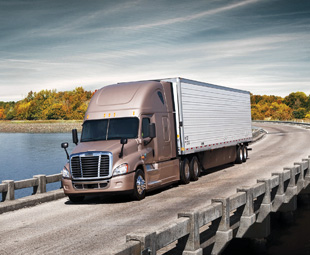A tool for Trump’s success

The international media has cautioned the world to prepare for the “unknown” actions and decisions of the newly elected United States (US) President, Donald Trump, and his administration. However, the transport community seems to “know” what Trump holds in store for the sector. ANLERIE DE WET investigates
During Trump’s election campaign he promised to create jobs and do so, in part, by improving the country’s infrastructure – which he believed would strengthen the US economy. He spoke of spending US$ 1 trillion (R13 trillion) to rebuild and fully modernise the country’s decaying infrastructure, which, according to the Senate Budget Committee, would create 13-million jobs.
One of Trump’s other key campaign promises was to prioritise his tax reform initiatives, which include reducing tax brackets from seven to three and reducing corporate tax rates from 35 to 15 percent.
With regard to foreign policy, Trump has vowed to rewrite the North American Free Trade Agreement (NAFTA) to make “fair trade more fair to America”, and withdraw from the Trans-Pacific Partnership (TPP) in order to keep business in the US.
Many vehicle parts are made in China and new policies may make attaining these parts much more expensive. However, Trump argues that the reason behind his plan is to build manufacturing plants in the US to create jobs and to make the transport sector (one of the biggest in the country) more independent.
Trump believes that by cutting out China and making the US transport industry more self-sustainable, there would be a massive flow of goods circulating throughout the country. This could be more cost-effective for logistics companies, while providing faster delivery times and the opportunity for warehousing spaces to expand.
After Trump won the US election on November 3, 2016, the American Trucking Association (ATA) told Logistics Magazine that it had already started meeting with the new administration and was looking forward to working with Trump on array of issues that are challenging the trucking community.
“As the industry that moves nearly 70 percent of our nation’s freight, it is a key economic driver, and we look forward to working with President-elect Trump on a host of issues, including long-term, sustainable infrastructure funding, tax reform and fair and free trade,” said ATA.
The Association of American Railroads (AAR) is also looking forward to working with the new administration, especially with regard to policy-making, according to Edward Hamberger, president and CEO of AAR.
“We hope Trump will move quickly on issues such as comprehensive tax reform that reduces the corporate rate, a review and reform of the broken regulatory system and an embracement of fair and open trade,” said Hamberger in a statement. “These policies, as well as the steady presence of America’s privately owned freight-rail network, are critical to enacting much of Trump’s agenda, including public infrastructure investment.”
The transport community also seems to be calmed by Trump’s nomination of Elaine Chao, former Secretary of Labour under the most recent Bush administration and an experienced member of the shipping and logistics industry, on November 29. The US Senate voted her in as Secretary of Transportation on January 31 with and an outright majority of 93 votes out of 99.
American consumers also seem to be excited about Trump’s promised policy changes, as consumer confidence increased from 90,6 index-points in June to 102,6 in December. However, this is an expected trend after US elections, according to the University of Michigan’s 2016 final index of consumer sentiment report.
Although the US transport and logistics sector is mostly optimistic about the administration’s policies, there are still some concerns. Professor Alan McKinnon, a transport and logistics specialist at the Kuehne Logistics University, says he attended two transportation conferences before Trump’s inauguration and found the testimonies he heard alarming.
“I found it disconcerting to listen to senior officials from the transportation departments of several states explain how little they could say or do about climate change. The constraint is partly linguistic. One official explained how, in promoting transport initiatives to politicians and the public, they had to avoid using the words sustainability, environment and climate change,” says McKinnon. “Another claimed that the only way to get carbon-reducing measures accepted in his state was to emphasise the ‘co-benefits’ such as fuel savings, better health and fewer accidents.”
There are also some concerns about the effect of increased fuel tax on the sector, as state legislators approved an immediate increase in the fuel tax. For truckers, however, it has meant an increase in the price of diesel since the legislation came into effect on January 1.
Only time will tell if Trump will actually see his promises through. Although, when one looks at the pro-active way he has already made policy changes in line with his campaign promises, the US transport and logistics industry may well benefit tremendously by becoming the key tool to achieve his administrative goals.
Published by
Focus on Transport
focusmagsa




 Big news from FOCUS on Transport + Logist
Big news from FOCUS on Transport + Logist


 !
Starting 1 April, every
!
Starting 1 April, every


 FUSO: Driving the Future of Mobile Healthc
FUSO: Driving the Future of Mobile Healthc



 A brand
A brand




 Wondering about the maximum legal load for a
Wondering about the maximum legal load for a 
 The MAN hTGX powered by a hydrogen combus
The MAN hTGX powered by a hydrogen combus

 Exciting News for South African Operators
Exciting News for South African Operators


